Guangzhou Travel Guide
Welcome to Guangzhou, a bustling metropolis located in southern China. Guangzhou, also known as Canton, is the capital city of Guangdong Province and is one of the largest and most important cities in China. With a rich history dating back over 2,000 years, Guangzhou is a city that offers a unique blend of tradition and modernity.

One of the most impressive features of Guangzhou is its dynamic and diverse economy. As one of the leading cities in China’s economic reform and opening up, Guangzhou has become a major hub for international trade, manufacturing, and innovation. This has made it one of the most important cities in China’s “Greater Bay Area” and a key player in the country’s economic development.
In addition to its economic prowess, Guangzhou is also a city with a rich cultural heritage. The city has been an important center of trade and culture for centuries, and this is reflected in its many historical sites and cultural attractions. The Chen Clan Academy, for example, is a stunning example of traditional Chinese architecture and is now a museum showcasing Guangdong’s folk arts and crafts. The Guangzhou Museum, on the other hand, provides an in-depth look at the city’s history and development.
Guangzhou is also known for its food. As the birthplace of Cantonese cuisine, Guangzhou has a rich and diverse culinary scene that is sure to delight any food lover. Local dishes include dim sum, roast meats, and steamed fish, which can be found in the city’s many restaurants and street food stalls.
Finally, Guangzhou is a city that offers plenty of opportunities for entertainment and relaxation. The city is home to several parks and gardens, including Yuexiu Park, which is home to the famous Five Rams statue, and Baiyun Mountain, which offers stunning views of the city. The Canton Tower, one of the tallest buildings in the world, is also located in Guangzhou and offers visitors a panoramic view of the city.
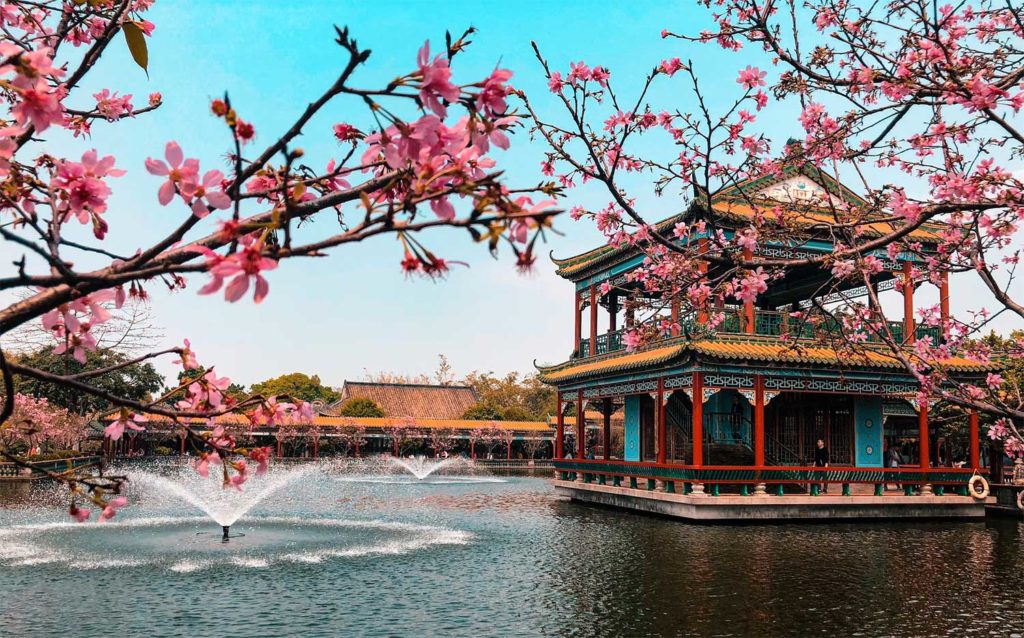
Travel to Guanghzou
Guangzhou is the capital of Guangdong sheng (province), southern China. Its city centre lies near the head of the Pearl River (Zhu Jiang) Delta, more than 90 miles (145 km) inland from the South China Sea. Because of its position at the meeting point of inland rivers and the sea, it has long been one of China’s main commercial and trading centres. It has served as a doorway for foreign influence since the 3rd century CE and was the first Chinese port to be regularly visited by European traders, who called it Canton. The city is a historic centre of learning. And as a centre of political activity for the Chinese Nationalist leader Sun Yat-sen (Sun Zhongshan), it was one of the cradles of the Chinese Revolution of 1911–12.
Landscape of the city
Located in the south-central part of Guangdong province, Guangzhou is a regional centre in southern China. The main part of the city is situated on the north bank of the Pearl River, which branches off the Xi (West) River before meeting with the Dong (East) River and forms the northern border of the immense Pearl River Delta to the south.
The central districts of the city lie to the south of Baiyun (“White Cloud”) Mountain, which rises to 1,253 feet (382 metres) above sea level about 4 miles (6 km) from the city centre. At the southern extension of Baiyun Mountain is Yuexiu Mountain, on which lived the earliest known inhabitants of the region. Archaeological work revealed that the site of the city during the Qin (221–206 BCE) and the Han (206 BCE–220 CE) dynasties was slightly north of the modern urban centre. Later the city expanded southward as river-borne silt and sand were deposited and the Pearl gradually became narrower.
Old Guangzhou was a crowded city of narrow streets and winding alleys. A vigorous modernization program was carried out in the 1920s and ’30s, during which wide streets were built, modern sewers introduced, arcades constructed for sidewalk shops, and numerous parks created. New dikes built along the Pearl allowed the city to expand southward to its present waterfront. Until the 1980s, the hills to the north restricted growth there, and the numerous waterways to the west also were a barrier; and Guangzhou’s subsequent expansion was mainly into the low plains to the east. However, with the influx of people after that, the city began to grow rapidly in all directions—notably to the north and south—though the core districts have remained concentrated around the old city site close to the riverbanks.

When to go to Guangzhou
The best time to visit Guangzhou is during the autumn season, which runs from October to early December. During this time, the weather is generally mild and pleasant, with comfortable temperatures and low humidity. This makes it an ideal time for outdoor activities and exploring the city.
The spring season, from late February to early May, can also be a good time to visit Guangzhou. The weather is generally mild and sunny, with colorful flowers in bloom throughout the city. However, be aware that the spring season can be quite rainy, and there may be occasional typhoons or thunderstorms.
The summer season, from June to September, is generally hot and humid, with temperatures often exceeding 30°C (86°F). This can make it uncomfortable for outdoor activities, and the air quality can be poor due to increased pollution. However, the summer season can also be a good time to visit the nearby beaches or water parks.
The winter season, from December to February, is generally mild, with temperatures ranging from 10°C to 20°C (50°F to 68°F). While it’s not as cold as some other parts of China, you’ll still need to pack warm clothing. There may be occasional rainfall during the winter season, but overall it’s a good time to visit if you prefer cooler weather and fewer crowds.
City layout
The central districts of Guangzhou stretch along a waterfront that runs south and then east along the Pearl River. The Old City (dating to the Ming dynasty and now mostly in the Yuexiu district), part of the district of Liwan to the west, and Tianhe district to the east are located on the north bank. On the south bank is the district of Haizhu, formerly largely industrial but now more given over to business offices, financial institutions, and other service-related activities. All these districts now comprise the core area of the city.
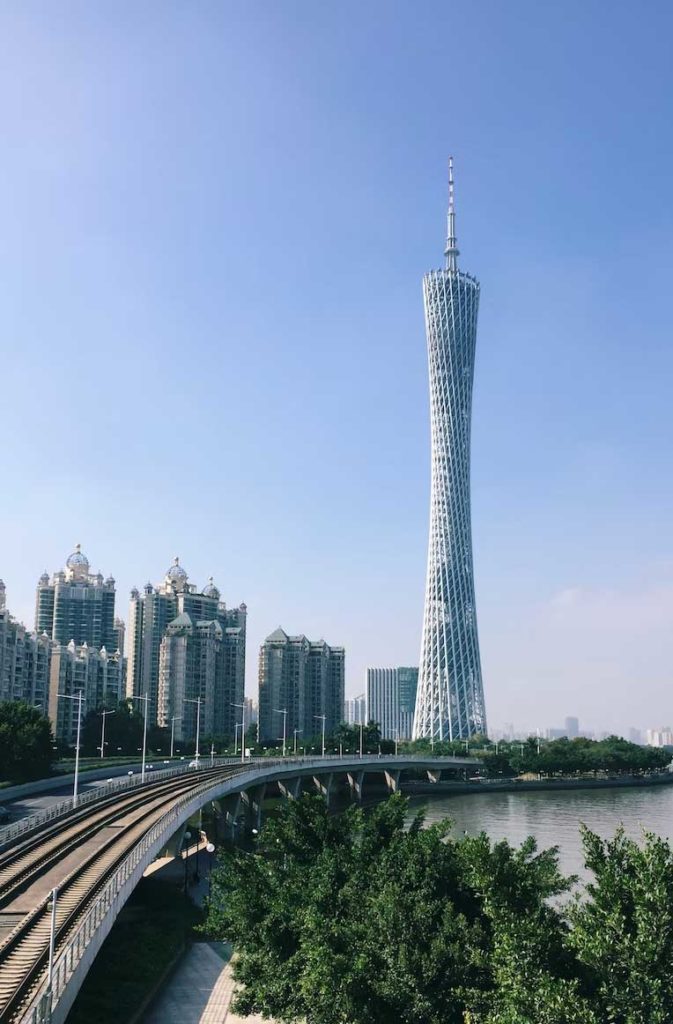

Old City districts
Yuexiu district is the commercial and financial centre of Guangzhou, as well as the site of provincial and municipal government offices. Included within it are the city’s major hotels, department stores, and cinemas; traditional Chinese buildings are rarely found in this district, except in the hills to the north. Skyscrapers line the banks of the Pearl in the downtown area and ring Haizhu Square, a huge open space by the river. Yuexiu’s original area, centred on the intersection of Guangzhou’s two main thoroughfares—the north-south Jiefang Lu (Liberation Avenue) and the east-west Zhongshan Lu (Sun Yat-sen Avenue)—was enlarged with the addition in 2005 of the former Dongshan district to the east. The Peasant Movement Training Institute, which flourished in the mid-1920s under the leadership of Mao Zedong, is on Jiefang Lu just east of that intersection. Also located in the vicinity are the Huaisheng Mosque (built 627 CE), considered to be the oldest mosque in China; the Buddhist Temple of the Six Banyan Trees (Liurong Si), founded in the 5th century, and its nine-story Flower Pagoda (Huata); and, south of the intersection and west of Zhongshan Lu, the Gothic-style Roman Catholic cathedral of the Sacred Heart, built in the 1860s.
Yuexiu Park, in the northern part of the district, is one of the city’s largest green spaces. Within the park are artificial lakes, a five-story red pagoda (built in 1380) that now houses the Guangzhou Municipal Museum, a flower exhibition hall, and sports and recreational facilities. Sun Yat-sen Memorial Hall (1931) is located immediately to its south. To the west of the park is the Guangzhou Foreign Trade Centre, which from the late 1950s to the early 21st century was the site of the China Import and Export Fair (also called the Guangzhou Trade Fair). The eastern (former Dongshan) portion of the district is home to two important sites—the Martyrs Memorial Park, dedicated to those killed in the uprising against the Nationalists (Kuomintang) in 1927, and a mausoleum for the 72 people killed during an unsuccessful revolt against the Qing dynasty in 1911. The area is also home to the Guangzhou Zoo.
The original Liwan district occupied the western part of the Old City, as well as a large island in the Pearl River to the west. It too was enlarged considerably in 2005, when it merged with Fangcun district, across the river to the southwest. The old part of the district has retained much traditional-style Chinese housing alongside a growing number of modern high-rise buildings. Liwan Park is located at the northern end of the district near the Pearl River Bridge, and northeast of there is Liuhua Park. To the southeast of Liwan Park, Shamian, a tiny island in the Pearl along the southern bank of the original district, was once an exclusive enclave of the British and French, and is noted for its Western-style mansions. The Fangcun area has long been known for its flower and tea markets.
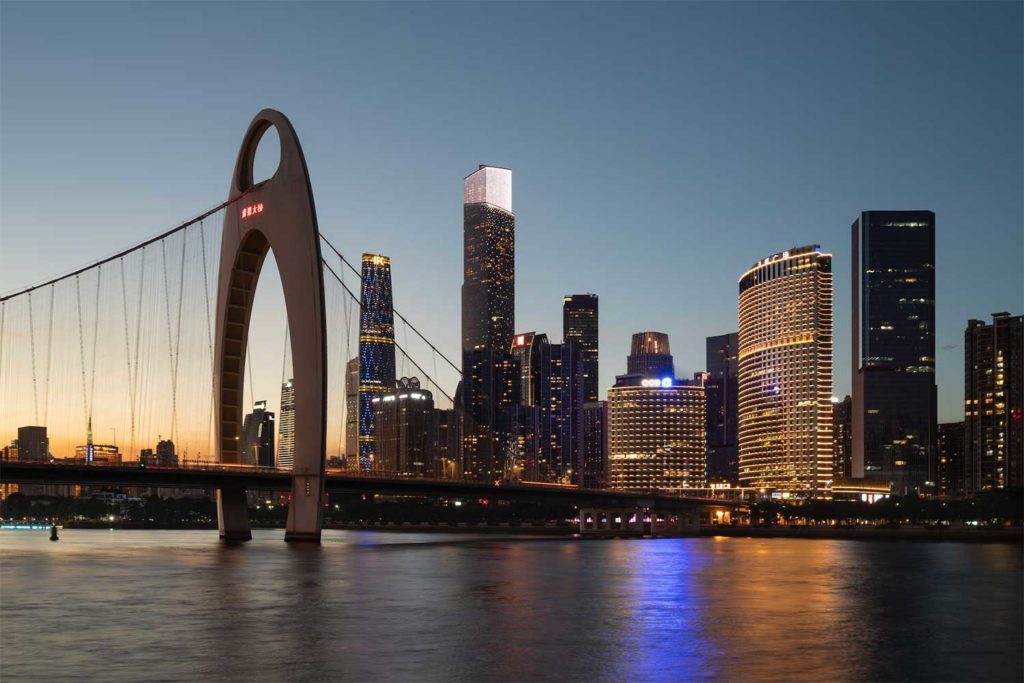
Other districts
Tianhe district, east of the Dongshan area, was created in 1985 from parts of the former eastern suburbs, and it is now considered to be one of the core districts of the central municipality. Its mixed urban and suburban landscapes now include business and shopping centres constructed along with high-rise office and residential buildings. Tianhe Science and Technology Park is home to many businesses engaged in the development of high technology and advanced software. In addition, many of the city’s institutions of higher learning are located in Tianhe. It has been targeted as the city’s new central business district for the 21st century. As part of that, the 103-story Guangzhou International Finance Center office tower opened in 2010 in the southwest part of the district, near the Pearl; the 111-story CTF (Chow Tai Fook) Finance Centre, a mixed-use tower, opened nearby in 2016.
South of the Pearl is Haizhu district. It was long characterized by modern residential quarters and large industrial centres, but since the late 1980s a growing number of financial and business firms have established themselves there. Of great significance was the completion in the early 21st century of the first phase of the Guangzhou International Convention and Exhibition Center (Pazhou Complex) on Pazhou Island in the Pearl River. One of the largest such venues in the world, it hosts Guangzhou’s major trade shows (including the Guangzhou Trade Fair) and has spurred rapid development of Haizhu’s commerce and tourism-related service sectors. Also located in the district are the south campus of Sun Yat-sen University (founded 1924) and the Pearl River (Zhujiang) Film Studio (now called Pearl River Film Group), one of the major film producers in China.
What to see and do in Guangzhou
Guangzhou is a large city with many different districts, each with its own unique character and attractions. Here is a brief overview of some of Guangzhou’s main districts and some of the top things to see and do in each:
Yuexiu District – This is the cultural and historical center of Guangzhou, and is home to many museums, historical sites, and parks. Some of the top attractions in Yuexiu District include:
- The Guangzhou Museum, which offers an in-depth look at the city’s history and development
- The Zhenhai Tower, a historic tower that offers panoramic views of the city
- The Sun Yat-sen Memorial Hall, which honors the founder of modern China
- The Yuexiu Park, a large park with several lakes, gardens, and historic sites
Tianhe District – This is one of the most modern and prosperous districts in Guangzhou, and is known for its shopping, entertainment, and business opportunities. Some of the top attractions in Tianhe District include:
- The Canton Tower, one of the tallest buildings in the world, which offers panoramic views of the city
- The Guangzhou Opera House, a stunning modernist building that hosts world-class performances
- The Tee Mall, a large shopping mall with many international brands and restaurants
- The Zhujiang New Town, a modern commercial district with many skyscrapers and landmarks
Haizhu District – This is an old district that has undergone significant development in recent years, and is now a thriving commercial and residential area. Some of the top attractions in Haizhu District include:
- The Pazhou International Convention and Exhibition Center, which hosts many international events and trade fairs
- The Canton Fair, one of the largest trade fairs in the world
- The Chimelong Paradise, a large amusement park with many rides and attractions
- The Pearl River Night Cruise, a scenic boat ride that offers stunning views of the city at night
Liwan District – This is one of the oldest districts in Guangzhou, and is known for its traditional architecture, food, and shopping. Some of the top attractions in Liwan District include:
- The Chen Clan Academy, a stunning example of traditional Chinese architecture that now serves as a museum showcasing Guangdong’s folk arts and crafts
- The Shamian Island, a charming historic island with many colonial buildings and tree-lined streets
- The Shangxiajiu Pedestrian Street, a popular shopping street with many traditional stores and restaurants
- The Qingping Market, a large market with many food and herbal medicine stalls

Getting around Guangzhou
Getting around in Guangzhou is relatively easy and convenient, with several modes of transportation available. Here are some of the main ways to get around the city:
Metro – Guangzhou has an extensive metro system that covers most parts of the city. The metro is efficient, clean, and affordable, with signs and announcements in both Chinese and English. There are currently 14 metro lines in operation, and more lines are being added to the system in the future.
Bus – Guangzhou also has a large bus network that covers many parts of the city. The buses are generally less expensive than the metro, and they offer a more flexible route system. However, the buses can be crowded and slow during rush hour, and it can be difficult to figure out the routes if you don’t speak Chinese.
Taxi – Taxis are a convenient option for getting around Guangzhou, especially if you’re in a hurry or traveling with luggage. Taxis are metered, and the fares are relatively inexpensive compared to many other cities. However, it can be difficult to find a taxi during rush hour or when it’s raining, and some taxi drivers may not speak English.
Bike-sharing – Guangzhou has a bike-sharing system that allows you to rent a bike using your smartphone and drop it off at a designated bike station when you’re done. This is a fun and eco-friendly way to explore the city, especially if you’re traveling short distances.
Walking – Many parts of Guangzhou are pedestrian-friendly, with wide sidewalks and pedestrian-only streets. Walking is a great way to explore the city at a leisurely pace and take in the sights and sounds of Guangzhou’s bustling streets and lively neighborhoods.
Eat and drink in Guangzhou
Guangzhou is known throughout China and the world for its delicious and diverse cuisine. As the birthplace of Cantonese cuisine, Guangzhou has a rich culinary heritage that draws from many different influences, including local ingredients, traditional cooking techniques, and international flavors. Here are some of the most famous and popular food specialties in Guangzhou:
Dim Sum – Dim sum is a Cantonese culinary tradition that consists of small, bite-sized portions of food served in bamboo baskets. It is often served for breakfast or brunch, and is typically accompanied by tea. Some of the most popular dim sum dishes in Guangzhou include steamed dumplings, shrimp dumplings, barbecued pork buns, and egg tarts.
Roast Meats – Roast meats, such as char siu (barbecued pork), siu yuk (roast pork belly), and siu mei (roast meats) are a staple of Cantonese cuisine. The meats are typically marinated in a special blend of sauces and spices, then roasted until they are tender and crispy. They are often served with rice or noodles, and are a popular option for lunch or dinner.
Congee – Congee is a type of rice porridge that is often served for breakfast or as a snack in Guangzhou. It can be made with a variety of ingredients, such as pork, chicken, fish, or vegetables, and is often garnished with toppings like peanuts, scallions, and fried dough sticks.
Wonton Noodles – Wonton noodles are a classic Cantonese dish that consists of thin noodles served in a hot broth, with wontons filled with shrimp or pork. The dish can be customized with different toppings and seasonings, such as chili oil, soy sauce, or vinegar.
Herbal Soups – Herbal soups are a popular health food in Guangzhou, and are often served as a tonic or remedy for various ailments. They are made with a variety of medicinal herbs and ingredients, such as ginseng, Chinese wolfberries, and dried seafood, and are believed to have a range of health benefits.
Seafood – As a coastal city, Guangzhou is known for its fresh and delicious seafood, which includes fish, crabs, prawns, oysters, and other shellfish. Some of the most popular seafood dishes in Guangzhou include steamed fish, salt-baked prawns, and stir-fried crabs.
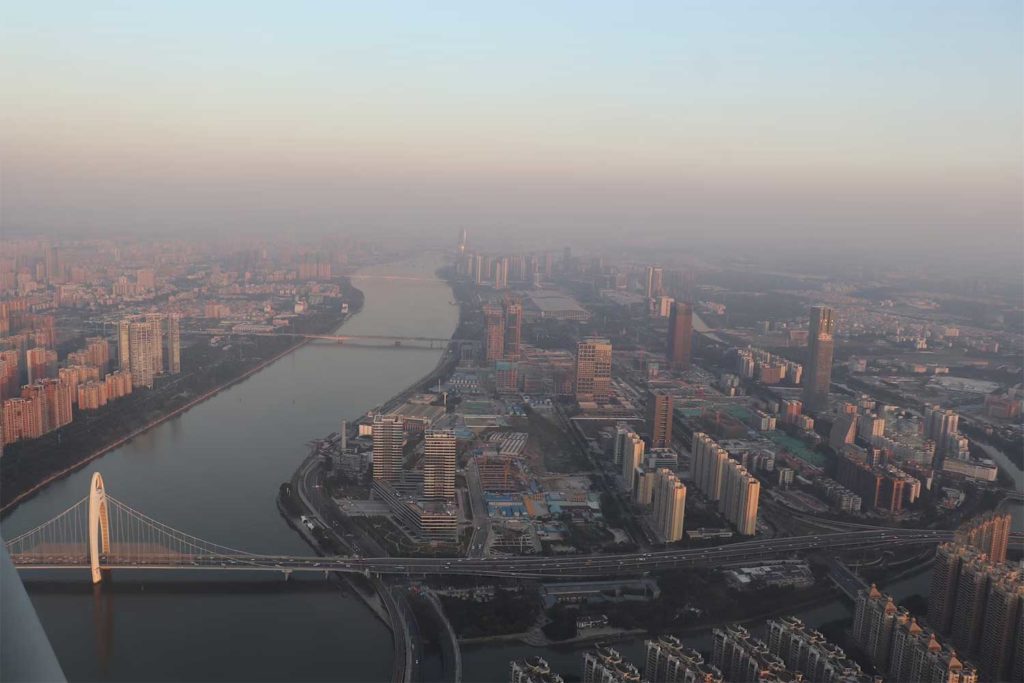
People of Guangzhou
Guangzhou is one of the most densely inhabited areas in China; most of its residents live in the central districts of the city. The local people, called Cantonese, speak the Cantonese language (Yueyu), which is distinctly different from the Mandarin spoken by most Chinese. However, with growing numbers of immigrants from northern and eastern China coming to live and work in the city, both Cantonese and Mandarin are now popularly used.
The earliest inhabitants, of Tai or Shan origin, were assimilated by the Chinese (Han) long ago. There are, however, small groups of Manchu and Chinese Muslims (Hui) in the city. A notable demographic feature is the large number of “overseas Chinese” who emigrated to Southeast Asia, the United States, Europe, and other parts of the world. Since the 1980s many of them returned and resettled in and around Guangzhou. Another phenomenon that emerged since the 1980s is the presence of a large transient population of workers from other provinces or even overseas. These workers temporarily reside in the Guangzhou area to work in factories or at other jobs before returning to their home regions.
Cultural life
Guangzhou is a vibrant city. Large tracts of parkland, many of them created since 1949, help give the city its characteristically lush appearance and provide the citizenry with a wide variety of recreational facilities. The colourful flower show held during the annual Spring Festival is a major highlight. Although the Cantonese share some aspects of the modern lifestyle of Hong Kong’s residents, they also prize their own historical and cultural roots. Throngs of people are usually found visiting the city’s many museums and monuments of historical importance, and productions of Yue opera and Chao opera and of musical performances are well attended. Guangzhou is noted for its puppet plays that feature large puppets with finely carved wooden heads.
The library of Sun Yat-sen University has one of the largest holdings in China, including an extensive collection of vernacular-language works. Notable historic sites include the tomb of Zhao Mei, second ruler of Nanyue, a state that was incorporated into the Xi (Western) Han dynasty (206 BCE–25 CE); the restored campus of Huangpu (Whampoa) Military Academy; and the residence of Sun Yat-sen. The octagonal Sun Yat-sen Memorial Hall is a 3,200-seat auditorium and has a bronze statue of Sun in front of the main entrance.
The vitality of the Cantonese people is exemplified by their passion for food. Cantonese cuisine is world-renowned, and the city’s hundreds of restaurants offer a seemingly endless variety of dishes. Many feature fresh ingredients, including locally caught seafood, that are quickly cooked, often by stir-frying. Congees (porridges made from rice or millet) and soups are often part of the meal. Some unusual local dishes include fried snake, cooked fish maw (swim bladder), fried shark’s fin, and fried chicken feet.

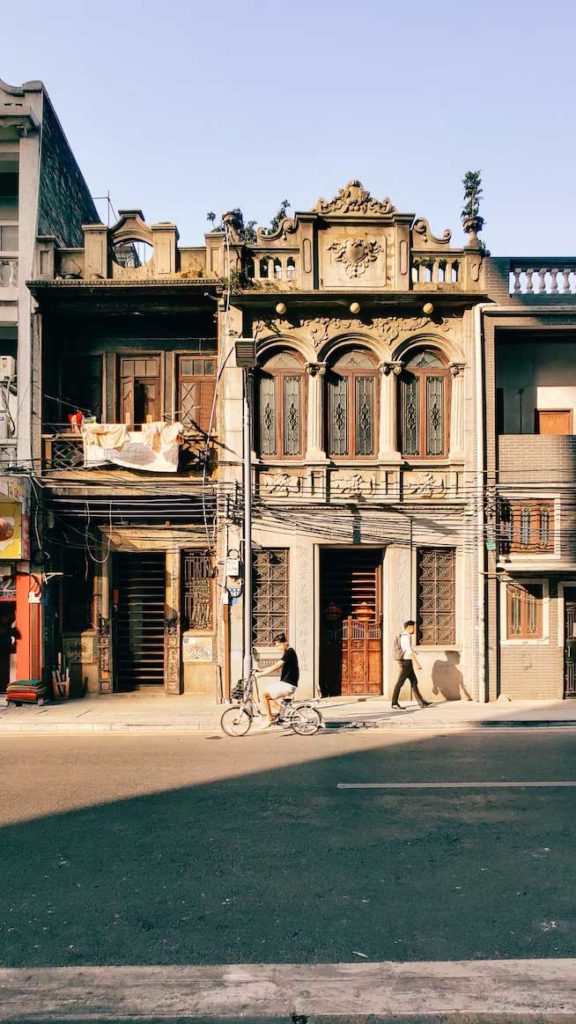
Modern recreational facilities have also enriched the city’s cultural life. Sports facilities, including stadiums, natatoriums, tennis courts, and a rowing centre, have added to the leisure diversions available to city residents. In addition, several new sports venues—including three gymnasiums, an aquatic centre, and an 18,000-seat indoor arena—were built when Guangzhou hosted the 2010 Asian Games. The tall, slender Canton Tower, constructed for both television broadcasting and recreational use, opened in 2010 on the south bank of the Pearl River in Haizhu district. Designed with a spiraling lattice exterior frame, the tower and its antenna have a total height of 1,969 feet (600 metres). Among its visitor facilities are restaurants and bars, a staircase that winds around the outside of its cylindrical core for more than 30 floors, and an open-air observation deck at the top of its 1,490-foot- (454-metre-) tall main structure.
Shopping, paying and taxes
Taxation and service charges when shopping and eating in Guangzhou can be a bit different from what you may be used to in other countries. Here’s a brief overview of what you can expect:
Sales Tax – In China, sales tax is included in the price of goods, so you don’t need to worry about adding extra taxes to your purchases. The current sales tax rate in China is 13%, but some products, such as food, books, and newspapers, are exempt from the tax.
Service Charges – Many restaurants in Guangzhou add a service charge to the bill, usually around 10% of the total. This charge is often listed separately on the bill, and is not the same as a tip. The service charge goes to the restaurant, and is not typically shared with the waitstaff.
Tipping – Tipping is not a common practice in Guangzhou, and is not expected in most situations. However, if you receive exceptional service from a waiter or other service provider, it is becoming more common to leave a small tip as a token of appreciation. This is usually only a few yuan or a small percentage of the total bill, and is not mandatory.
Bargaining – In markets and other places where haggling is common, it’s important to be polite and respectful when negotiating prices. In general, it’s a good idea to start with a low offer and work your way up to a price that both you and the seller are happy with. Remember that bargaining is part of the culture in Guangzhou, and it’s often expected in markets and other places where prices are not fixed.

–
Check our other travel guides.